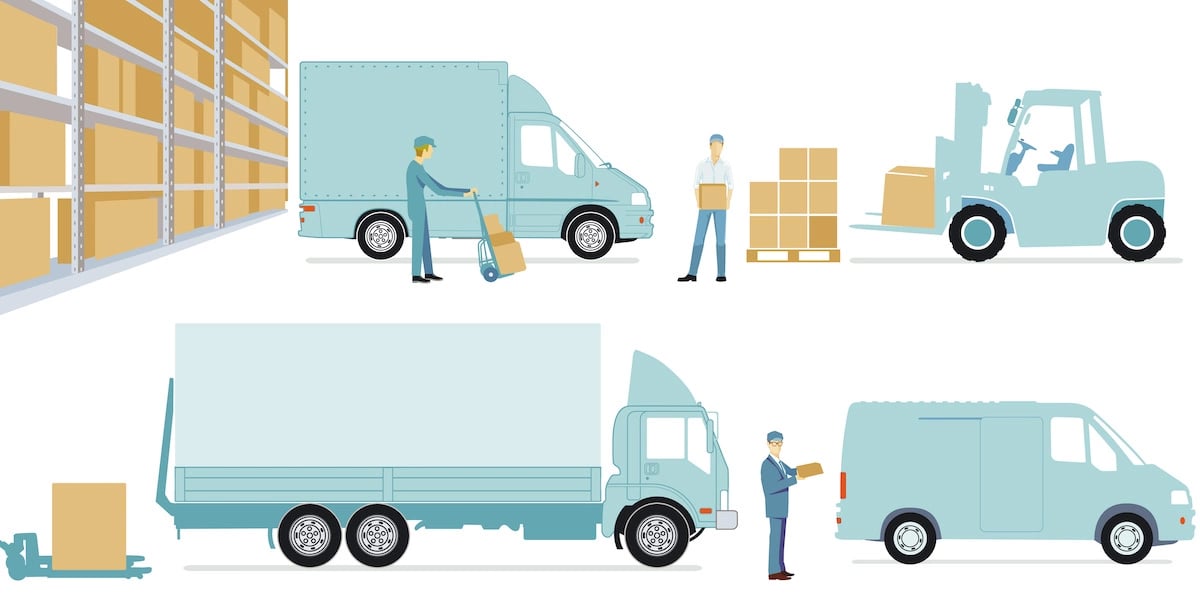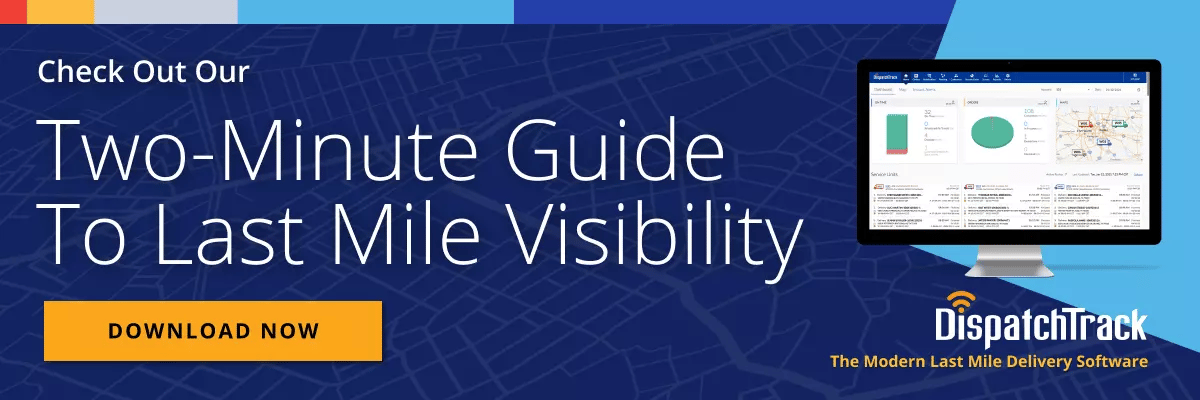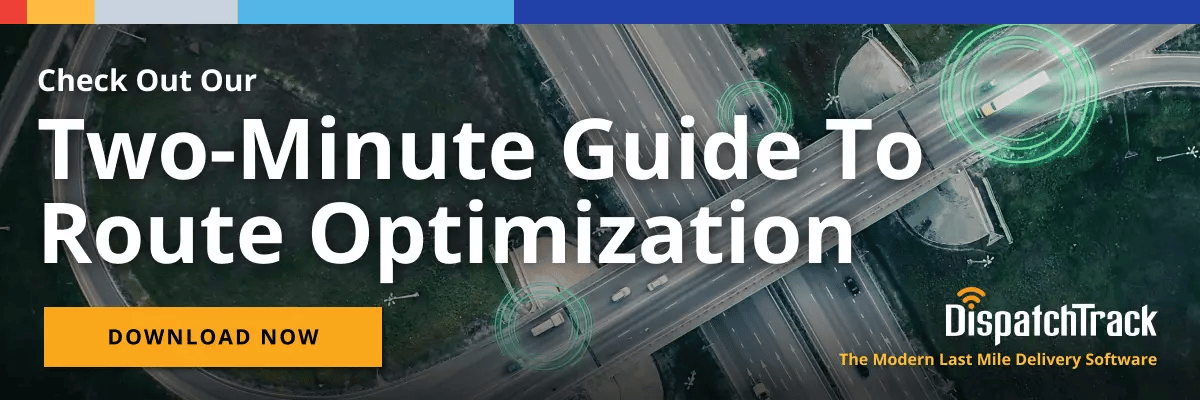Major retailers and other large businesses know that last mile delivery is now considered to be a key brand differentiator. The final mile, however, is not at all easy to handle, nor is it cost-effective. In fact, the last mile accounts for roughly more than half of a company's overall shipping costs.

This might sound daunting, but in point of fact the inefficiency of the last mile is a huge opportunity, especially for larger businesses. Why? Because it presents a huge area for potential cost optimization, which can have a significant impact across your entire enterprise.
Cost Optimization Risks for Last Mile Deliveries
Failing to optimize last mile delivery logistics means higher operating costs, which obviously runs a risk of cutting into your profits. Below are the specific consequences of inefficient last mile logistics operations.
Unhappy customers
The last mile plays a crucial role in satisfying customers especially those who purchase goods online.
Consumers' expectations have changed significantly in the last few years. Aside from expecting to receive their orders in acceptable condition and on time, they also want more transparency into the order fulfillment process. Many shoppers also want more control over when their order actually arrives, either by selecting from multiple delivery options of even self-scheduling. Simply put, customers expect better and more personalized delivery services these days.
Last mile delivery optimization is crucial in meeting new consumer expectations. On the flip side, poor delivery experiences will alienate customers. One study showed that around 84 percent of customers refuse to patronize the same brand after a poor final mile delivery experience. Nearly all consumers say that personalized and reliable delivery services are essential for brand loyalty.
Higher operating costs
Lack of optimization results in higher last mile delivery costs. A single failed delivery can cost $17 on average—and that number can be much higher for larger format deliveries.
It's not only failed deliveries that companies should be worried about. Inefficient final mile operations translate to higher fuel consumption, more costly vehicle maintenance, and lower productivity of drivers. To put it bluntly, these conditions have long been the norm in the last mile—which is why it’s so often cited as the most expensive part of the supply chain.
Lower profitability
Combine unhappy customers (who won’t want to patronize your business again) with higher operating costs, and what do you get? A formula for shrinking profit margins.
Here, it’s easy to see vicious circles emerging. If your routes aren’t optimized, your drivers and carriers perform fewer stops in a day and thus make less money, which impacts retention. Then, you find yourself lacking the capacity to meet order volumes, which results in more unhappy customers. Luckily, the last mile doesn’t have to look like that.

Last Mile Delivery Optimization: The Benefits
Last mile delivery operations may be inherently complex and inefficient, but you can still optimize the final mile with the help of the right last mile delivery optimization software. The stakes here are much higher for enterprises, but the potential payout is that much larger as a result.
Automated and streamlined delivery processes
A last mile solution that automates the repetitive and time-consuming tasks in the delivery process such as manually tracking orders, planning routes, and contacting drivers and customers on the day of delivery can be a huge boon to companies that deal with last mile deliveries. Automation saves businesses resources, time, and money while ensuring accurate route and load planning. Multiply this by thousands of trucks and orders and you’re looking at a potentially significant impact.
Efficient route planning
The more stops you have to route, the more difficult it is to assign the right orders to right trucks and find efficient paths and sequences between job sites. A last mile solution with dynamic route optimization features helps you find the most efficient route for each driver on your team. The software should be designed to factor in real-time information when calculating routes and ETAs, and it should be easy to extend the routing functionality to contract drivers, carriers, or third party logistics providers as needed.
Better visibility and exception management
Delays happen despite having the best systems in place. Sometimes, businesses don't have much choice except to manage customers’ expectations by informing them of the possible delays ahead of time. Updating customers in real-time is a better option than having customers call the customer service team demanding to know what happened to the package.
This requires a huge amount of last mile visibility. And, like we saw above, it also requires the ability to gain visibility into 3PL and carrier operations without a laborious process of digging through multiple different software solutions. Once you have this level of visibility in place, however, you can leverage proactive exception management into improved customer experiences and repeat business—even when things aren’t going perfectly to plan.

More flexible deliveries
Shoppers now demand more delivery options. For example, some buyers purchase their essentials online such as medicines, which they need within the next few hours. Some buyers also might have to change the delivery address or time. A last mile delivery solution enables companies to offer flexible delivery options to customers. Here, it’s valuable to have cloud-based software that can update routes in a matter of minutes—rather than relying on legacy routing software that might not give you this kind of flexibility.
Better productivity
Without a last-mile delivery optimization software, fleet managers will have a hard time monitoring their delivery teams. But the right software lets you track driver behavior with an eye to reducing driver idling or harsh braking. This can help you improve fleet productivity above and beyond the efficiency gains you get through route optimization.
Improved scalability
Even enterprises often have difficulties scaling their operations in response to higher order volumes. For example, many enterprises could barely keep up with the flood of orders when stay-at-home orders were implemented at the beginning of the COVID-19 pandemic.
To help enterprises scale during periods of higher order volumes, a last mile solution needs to easily integrate with third-party logistics providers when the in-house delivery team can no longer keep up. The software also needs to allow fleet managers to maximize the number of deliveries per day since they can plan routes more effectively.
Higher customer satisfaction
Last mile solutions provide shoppers real-time visibility of their packages, thus increasing transparency. When you can meet promised delivery windows and offer more and flexible delivery options, you can boost engagement and delight your customers.
In the end, staying ahead of competitors and ensuring high customer satisfaction require optimizing last mile deliveries. And this can only be done by investing in the right last mile delivery software.